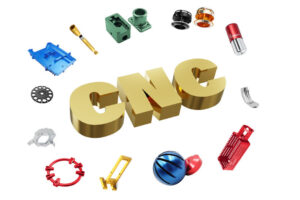The Art of CNC Precision Machining: A Comprehensive Guide

CNC precision machining is a process that involves the use of computer-controlled machines to create complex and intricate parts with high accuracy and precision. This technology has revolutionized the manufacturing industry, making it possible to produce parts that were once impossible to create using traditional machining methods. In this article, we will explore the world of CNC precision machining and provide you with a comprehensive guide to help you understand the process and its benefits.
What is CNC Precision Machining?
It is a process that involves the use of computer-controlled machines to create parts with high accuracy and precision. The process involves the use of a computer program that controls the movement of the machine, allowing it to cut and shape the material into the desired shape. The machines used in CNC precision machining are highly advanced and can perform a wide range of operations, including drilling, milling, turning, and grinding.
Benefits
CNC precision machining offers a wide range of benefits, including:
1. High Accuracy and Precision: CNC machines are capable of producing parts with high accuracy and precision, ensuring that the final product meets the required specifications.
2. Increased Efficiency: CNC machines are highly efficient and can produce parts at a much faster rate than traditional machining methods.
3. Cost-Effective: It is a cost-effective process, as it reduces the need for manual labor and minimizes the risk of errors.
4. Versatility: CNC machines can be used to produce a wide range of parts, from simple to complex, making them a versatile tool in the manufacturing industry.
The CNC Precision Machining Process:
The CNC precision machining process involves several steps, including:
1. Design: The first step in the process is to design the part using computer-aided design (CAD) software. This software allows the designer to create a 3D model of the part, which is then used to generate the CNC program.
2. Programming: The next step is to program the CNC machine using the CNC program generated from the CAD software. The program contains instructions on how the machine should move and cut the material to create the desired shape.
3. Setup: Once the program is generated, the machine is set up with the appropriate tools and fixtures to begin the machining process.
4. Machining: The machine is then started, and the material is cut and shaped according to the instructions in the CNC program.
5. Inspection: Once the machining process is complete, the part is inspected to ensure that it meets the required specifications.
Applications
CNC precision machining is used in a wide range of industries, including:
1. Aerospace: It is used to produce parts for aircraft engines, landing gear, and other critical components.
2. Medical: It is used to produce medical devices, such as implants and surgical instruments.
3. Automotive: It is used to produce parts for cars, trucks, and other vehicles.
4. Electronics: It is used to produce parts for electronic devices, such as smartphones, laptops, and tablets.
CNC Precision Machining
|
Materials
|
Aluminum, copper, brass, stainless steel, carbon steel, steel, iron, alloy, zinc,titanium, etc.
|
|
Surface Treatment
|
Anodizing, Brushing, Galvanized, Laser engraving, Silk printing, Polishing, Powder coating, etc.
|
|
Tolerance
|
±0.1~0.005mm, 100% QC quality inspection before delivery, can provide quality inspection form
|
|
Testing equipment
|
RoHS tester , callipers , salt spary tester , 3D coordonate measuring instrument
|
|
Processing
|
|
|
Quality Assurance
|
ISO9001:2015 Certified.TUV
|
Conclusion:
CNC precision machining is a highly advanced technology that has revolutionized the manufacturing industry. It offers a wide range of benefits, including high accuracy and precision, increased efficiency, cost-effectiveness, and versatility. The process involves several steps, including design, programming, setup, machining, and inspection. It is used in a wide range of industries, including aerospace, medical, automotive, and electronics. With its many benefits and applications, it is sure to continue to play a vital role in the manufacturing industry for years to come.






